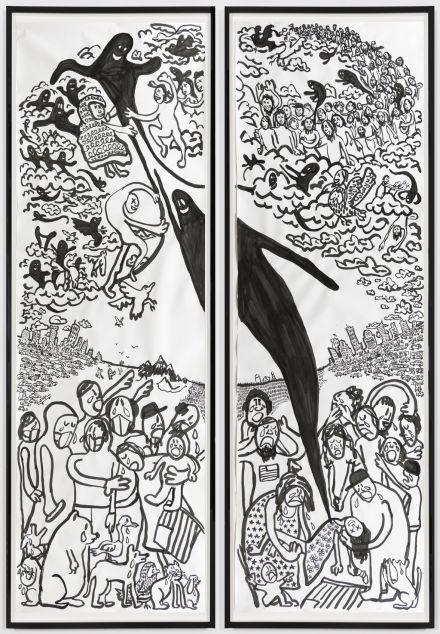
Paul Chan, Spekulieren (to speculate) (2020), via Greene Naftali
Opening his fifth solo exhibition, Drawings for Word Book by Ludwig Wittgenstein, at Greene Naftali in New York, artist Paul Chan has installed a series of loosely rendered, childlike drawings, a swirling body of playful images rendered in black and white, sprawling across the walls of the gallery. Marking a continuation of his practice between producing art works and printed materials through his publishing company, Badlands Unlimited, the show marks an intriguing engagement with the philosopher Ludwig Wittgenstein.
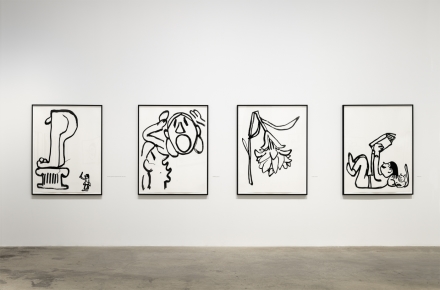
Paul Chan, Drawings for Word Book by Ludwig Wittgenstein (Installation View), via Greene Naftali
The show stems from a long-running inquiry by Chan, researching and investigating a long-rumored textbook for children published by the Austrian philosopher. Never before translated into English, the book was written it in 1925, while teaching at Cambridge. Deeply dissatisfied with his work at the University, Wittgenstein took on a job teaching elementary school in rural Austria, where we would teach poor children from the area, and where he began to develop a “dictionary” for his students.
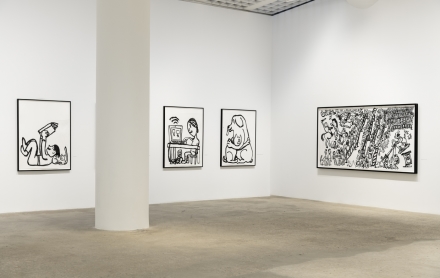
Paul Chan, Drawings for Word Book by Ludwig Wittgenstein (Installation View), via Greene Naftali
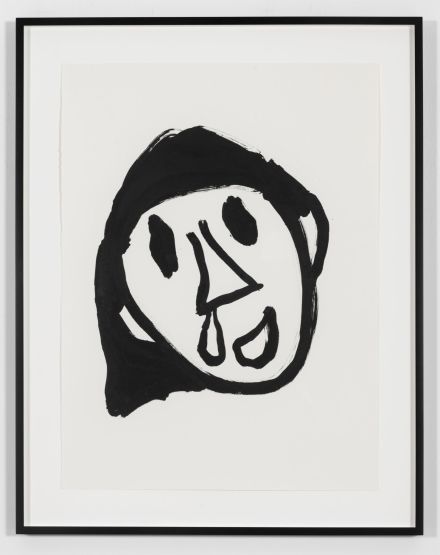
Paul Chan, der Rotz (snot) (2020), via Greene Naftali
The result, Wörterbuch, showcases both Wittgenstein’s educational process, and his work in flux, as he taught children and reworked his concepts of how logic and philosophy should function. “Word Book is an utterly unique work from a formidable philosopher who ended up learning from his students about what it means to understand the world, and a testament to how a mind is changed, if one is willing to let go of a certain idea of who one happens to be,” Chan says of the work.
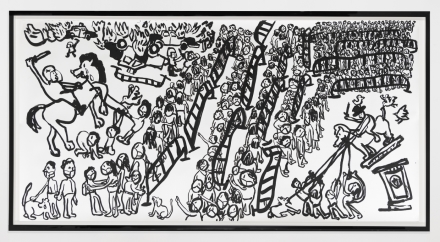
Paul Chan, Kurieren (to cure/to heal) (2020), via Greene Naftali
At the gallery, the artist has compiled the drawings produced for inclusion with his English translation for the text. Rendering playful forms and bright scenes in a loose hand, informed in addition by the artist’s use of his non-dominant left hand to create the images. Their loose, flowing presentation lends the work an additional child-like final presentation, re-learning the rules and mechanics of figuration in the same way that both Wittgenstein did in his work, discovering the roots of that same process in his young students. Concise and impressive, the show is an impressive look at how rules can bend and change, even in the mind of our greatest thinkers.
The show closes December 19th.
– D. Creahan
Read more:
Paul Chan at Greene Naftali [Exhibition Site]



